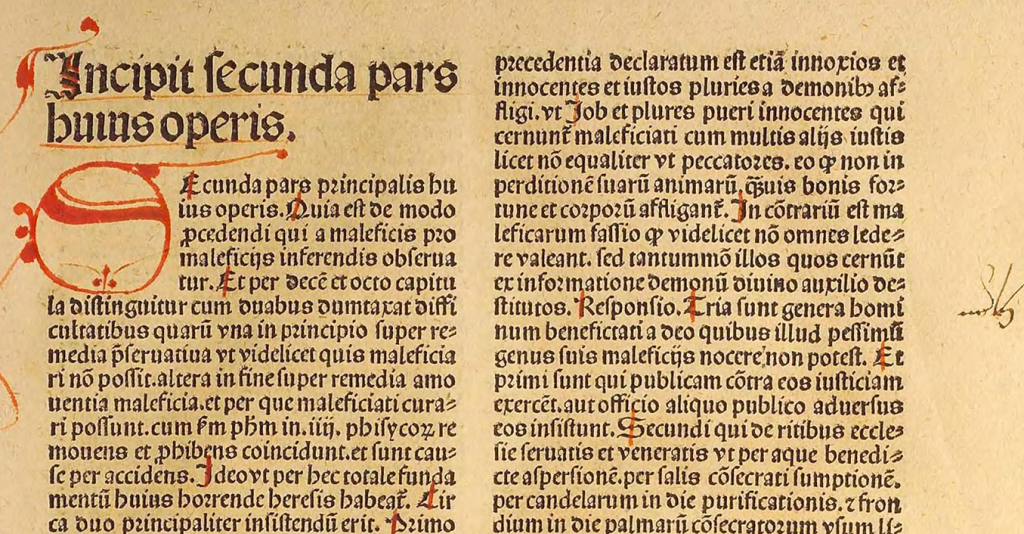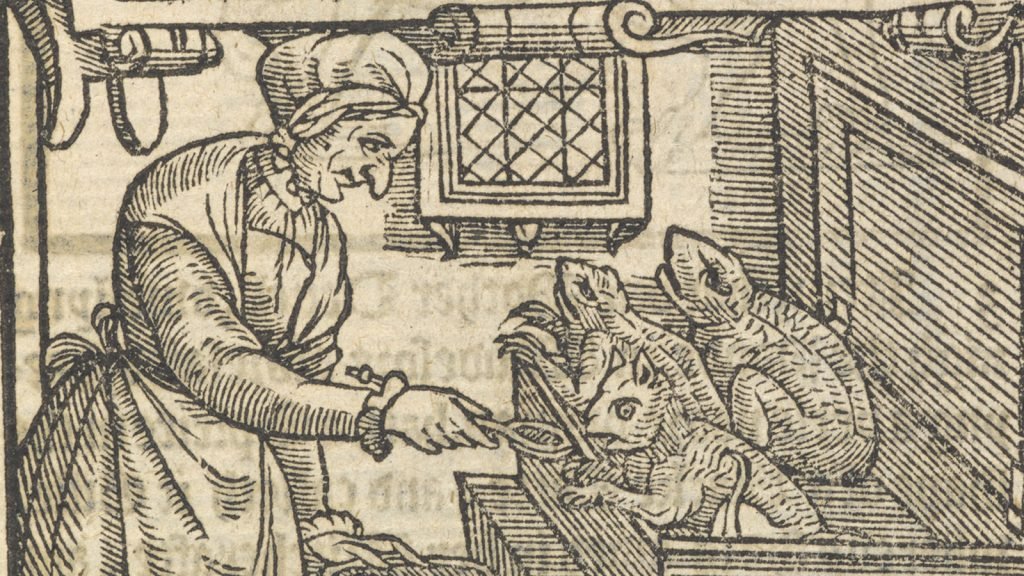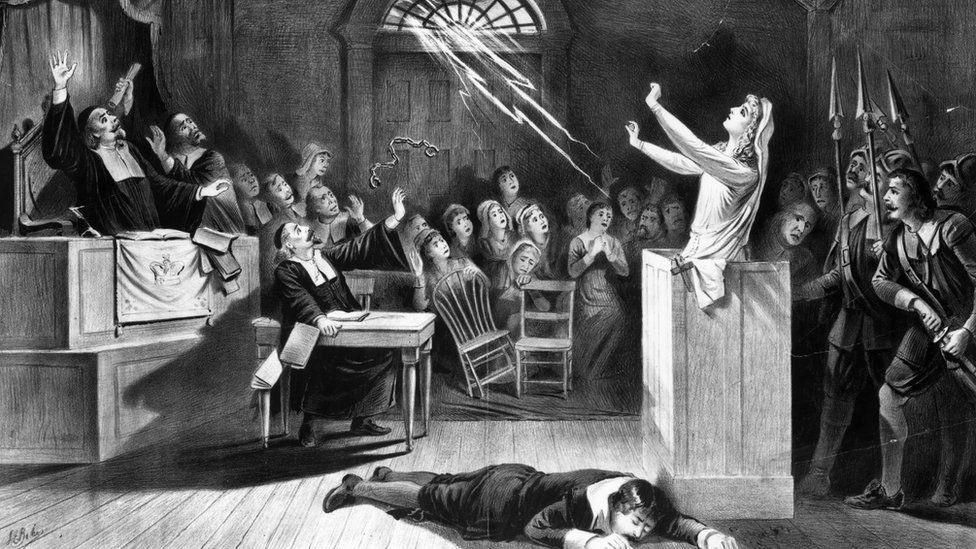Throughout centuries, witches have appeared in various forms. Such as wicked individuals, who were in league with the Devil, of the possession of necromantic powers. Therefore, they were simply potential dangers for others. In Medieval Europe, Witchcraft was perceived to facilitate the summoning of demons, the Devil, and other evil spirits.
Of course, the church had the power to punish any human being. The priests had the power to exorcise anyone possessed by demons. That was a primitive time when people believed in old wives’ tales. More precisely, people blamed witchcraft if the crops failed. They also blamed it if a child died prematurely. Additionally, they blamed witchcraft if livestock died.
Let’s get the bottom of Witchcraft first.
Deuteronomy 18:11-12: ‘‘Let there not be found among you anyone who immolates his son or daughter in the fire, nor a fortune-teller, soothsayer, charmer, diviner, or caster of spells, nor one who consults ghosts and spirits or seeks oracles from the dead.’’

The Hammer of Witches
There was this book, named The Malleus Maleficarum (1486), written by Heinrich Kramer (There is no doubt that it would be a man.) He got yhe permission to write this document. Thanks to Pope Innocent VIII, to be able to identify witches and of course, hunt them.
The book is actually a root cause of all the torture and executions related to witches. The book has three parts:
The first part is somehow the evidence that Witchcraft exists (!) . Moreover it claims that there have to be three elements of Witchcraft;
The evil-intentioned witch,
The Devil itself, obviously, and
Yhe permission of God, which is quite interesting. I mean, even when you intend to be pure evil, you need a permission, brilliant!
Nonetheless, the second part consists of the details about practices, powers and possible abilities of witches. It also discusses how they recruit others to their ‘side.’ It absurdly states that it is not the Devil, who is in charge of recruiting. Instead, it is the women who are corrupted and now deeply controlled by his power.
Before passing on the next part, I would say here that
Anyway, the third part legalizes the Malleus Maleficarum and describes how to locate and prosecute a witch. By the 15th century, there were no more severe than a day in the stocks. Yet, after the introducing of the Malleus Maleficarum, the persecution and punishments have become more and more brutal. And as crazy as it seems today, it was a real and pretty dangerous time.Howeve it was dangerous mostly for women, not just people in general.

The Witchcraft Act
In 1542, Parliament declared that Witchcraft practices would result in death penalties. They repealed the Witchcraft Act of 1542 two years later.
They restored it fifteen years later in 1562. James I, a man captivated by occult and demonology, ascended the throne in 1604.
The Witch-hunting craze peaked during the late 16th century. The South of England saw the highest number of accusations, with more than five hundred people executed.
After centuries, in 1736, they repealed The Witchcraft Act again . However,Authorities still possessed the power to punish people. They may charge them with fines or imprisonment for practicing magic or sorcery. However, This was a better option than the death penalty.
In 1824, the Parliament passed the Vagrancy Act, that fortune-telling, astrology (Seriously?) and any form of spiritualism was an offence. (How kind.) The Vagrancy Act, on the other hand, is still in effect through England and Wales. The modern Vagrancy Act has spared fortune tellers, astrologers and spiritualists and now it is ‘’an act for the punishment of idle and disorderly persons, rogues and vagabonds.’’
The Magic Bread: Medieval LSD
During the 17th century, there was something called the magic bread. According to the belief, witches would give this magic bread to their victims, and the victims would immediately start to hallucinate (!) and suffer. Authorities accused many village people, especially women, of making magic bread and sentenced them to death.
After a long-term research, scientists have taken another look at the magic bread (Thanks!) and found a sensible explanation for it. They simply believed that tainted rye, covered with the dangerous mold ergot, was the black sheep. Let me explain what this ergot is. You can find ergot in LSD, yet it grows naturally on the bread making crops.

From Black Death to Black Cat
I suppose everybody is familiar with the belief that a black cat brings bad luck. Besides, people considered the black plague, also known as the black death, as damned. In fact, it was simply a disease caused by the bacterium Yersinia pestis. This bacterium enters the body through the skin, travels via the lymph system, and lives in the digestive tracts of fleas.
There is no need to talk about how fast it can spread, I believe, we all know half of Europe has died due to the black plague. The question is what is the connection between the black plague and the black cat? To be able to answer this question, we need to comprehend the belief system of Medieval Europe.
During this period, people were prone to several superstitions. Back in the time, the Catholic Church was the most powerful authority in Europe. People assumed that masses of black cats might be in any form of evil presence. They thought so because of their secretive nature and ability to survive in extraordinary circumstances.
The general population started to be scared of cats since they believed that they consort Satan. Nonetheless, when the population of rats has increased, the plague grew even more. Later, since animals typically harboured fleas, people drastically thought even worse and they began to associate the black death with CATS.
In the end, they decided that the rats and neither cats nor dogs were responsible for spreading the black plague. Which shed light on the scientific discovery of the plague’s possible causes.
One could also say that the connection of most of these superstitions were with prudery, bigotry and hypocrisy. When you take a brief walk along the paths of Witchcraft’s winding history. It’s quite obvious that most of them have been prepared by men against women.
‘Stereotype’ superstitions are already abominable, but appropriating these to women or animals is definitely beyond imagination, even for Medieval people.












